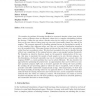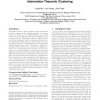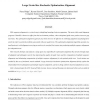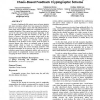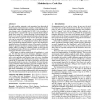409 search results - page 81 / 82 » Iterative methods for computing generalized inverses |
JMLR
2008
13 years 6 months ago
2008
We consider the problem of learning classifiers in structured domains, where some objects have a subset of features that are inherently absent due to complex relationships between...
KDD
2008
ACM
14 years 7 months ago
2008
ACM
Information-theoretic clustering aims to exploit information theoretic measures as the clustering criteria. A common practice on this topic is so-called INFO-K-means, which perfor...
BIBE
2006
IEEE
14 years 27 days ago
2006
IEEE
DNA sequence alignment is a critical step in identifying homology between organisms. The most widely used alignment program, ClustalW, is known to suffer from the local minima pro...
MM
2004
ACM
14 years 8 days ago
2004
ACM
Security of multimedia files attracts more and more attention and many encryption methods have been proposed in literature. However most cryptographic systems deal with multimedia...
POPL
2009
ACM
14 years 7 months ago
2009
ACM
We study modular, automatic code generation from hierarchical block diagrams with synchronous semantics. Such diagrams are the fundamental model behind widespread tools in the emb...
